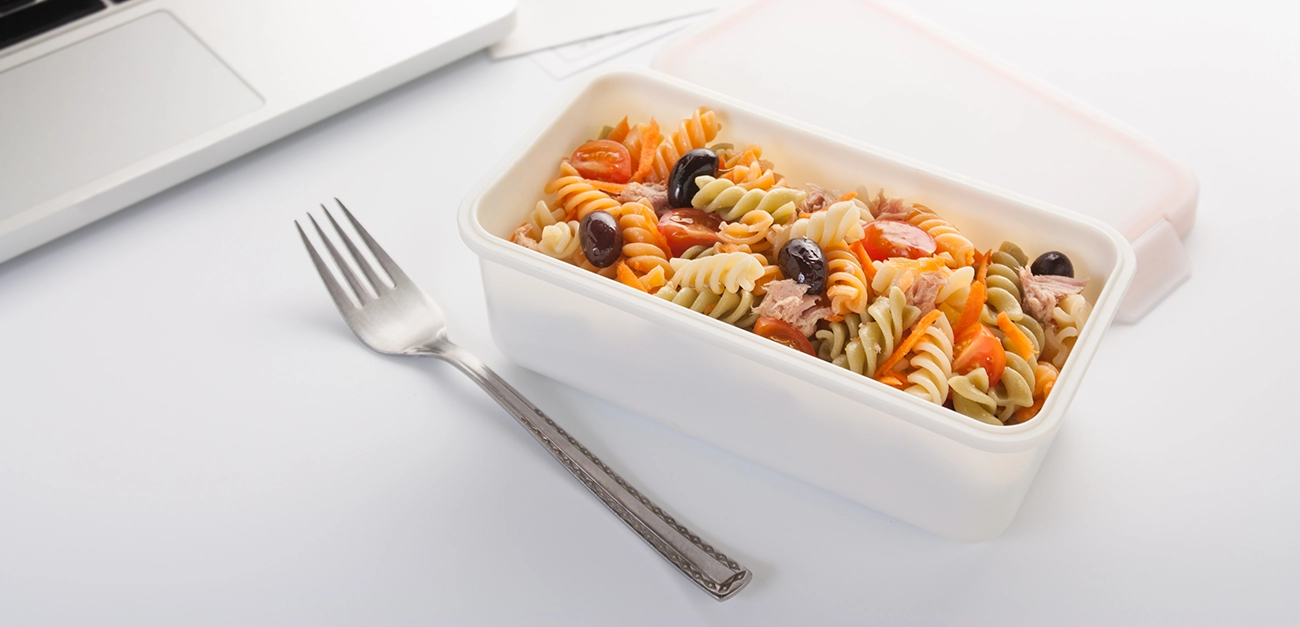Still eating out for lunch?
Gail Vernon discusses changing financial habits and maximising your culinary budget.
The cost-of-living crisis is now daily news and something that must impact most of us in some way. The pace of food price rises in September 2022 was at its highest since April 1980 – running at an annual rate of 14.5 per cent – with bread and cereals, meat products, milk, cheese and eggs leading the increases. This is a compelling reason to take a closer look at our food habits to see if we can reduce what we spend. The good news is that there may also be many other benefits in addition to saving money.
Our personal circumstances often drive our habits. If you are into marathon running and keeping fit your diet will certainly reflect this. In my case and only mentioned as a keen dog walker, I have another driver which is my husband. I am married to a (lovely) type one diabetic. In the beginning food and shopping were a minefield. I would spend literally hours in the supermarket looking at labels (this was before the advent of a carb counter app). I found so many hidden sugars – something most people don’t know to look for, with low fat items often bulked out with sugars. Ready meals, preprepared sauces and even processed bread contain sugars, just to mention a few. This led me down a path of cooking meals from scratch to know exactly what was included so it could be measured. It also led to a cook book obsession. Some women do shoes and handbags, I sneak in cook books, hundreds of them! So, what has this to do with going out for lunch?
I take my lunch to work most days, it’s not a new thing but think it’s now more important than ever from a financial point of view. I can be very self-righteous, especially if somebody in my team is spending money on buying lunch. In their defence they are pretty good compared to some others I know who might pick up anything from a Tesco meal deal at £3 to booking Uber Eats to drop off a Burger King Whopper meal at £8.99 plus £3.29 delivery. The cost is one thing but now Burger King are obliged to add the calorific count showing it’s a whopping 1,238 kcal, why would you? Sorry to judge- glass houses and all that but for those who may be interested, here are my ideas on how you might save money whilst eating a healthier diet.

Mothership meals
An idea of Jamie Oliver’s which I think works really well, especially now winter is coming. It’s based on making a meal such as a Sunday roast. Use a bigger roast of chicken, beef or lamb than you would normally, and you’ll have enough left over to make a further three or four meals by adding some basic ingredients to make a stew, hotpot or pie. These can be eaten on subsequent days or popped into the freezer until needed. The oven is on only once and it’s a great way of coming up with ideas for the weekly meal plan. The book is called Save with Jamie and it’s all about shopping smart, clever cooking and wasting less. It’s an older book and I often see it outside the WH Smith in service stations at 70 per cent off. It’s worth the investment.
Use seasonal foods
We can buy pretty much anything at any time of the year but there is a cost associated with this. The latest increase in food prices is in fact due in part to the UK sourcing food items from overseas with raised packaging and transport costs. Buying foods within seasons means that it will be cheaper as it will be plentiful with the added value that it will have travelled less distance/time. This also means that vegetables will not have the need for as many pesticides to keep it fresher for longer. Also thinking about the cosmetic look of vegetables many supermarkets are now offering ‘wonky’ packs . These offer even more value. They might not conform to the ideal look of a carrot, but they are probably more like you would get in a local farmers box, without the organic label. I have a great cook book which has a soup for every day of the year based on seasonal ingredients. A Soup for Every Day: 365 favourite recipes by the New Covent Garden Food Company. Soup is generally easy to make and also a great way to use up leftovers, but it can also be exotic and sophisticated. Again, make more than you need and freeze in individual portions ready to pull out of the freezer to take for lunch.
Can I also use this opportunity to remind my VSM team we did implement ‘Souper Tuesday’. This is where the business allows a member of staff to expense the ingredients and some artisan bread plus we have a VSM portable soup maker. I must put this on our next team meeting agenda to get it going again for the winter. It’s great fun and a chance to take some valuable time out to sit down and eat together as a team.
Batch cooking
Cooking in batches is great as it’s a good use of time, it’s often cheaper as you can buy in bulk or at least in larger packs. Another benefit is you can measure your portion size as you pack it into trays or bags to pop into the freezer. Again, you are optimising the cooking time which saves on your energy bills. It will also help you to always have something in for lunch to help you prevent you from calling Uber Eats- other companies are available!
Go vegetarian three nights a week
With vegetables being much cheaper than most cuts of meat it makes sense to use more with so many tasty recipes available on www.Olivemagazine.com Eating less meat is also good for the environment and your health.
Have a weekly meal plan
A weekly meal plan sounds so simple, but I don’t know anybody else who does this. It’s a great way of knowing what you are going to cook/prepare for your meals each week. You always know what you will have left over to take in for lunch! Some people place it on the fridge, so the family know what to expect. Having a plan not only saves money but eliminates the stress of ‘what’s for dinner’? You know exactly what you need to buy when shopping. Having a list also allows you to better stick to a budget if you have one. Always remember to check the fridge, freezer and cupboards before shopping or if you are super organised check your inventory!
So, without wanting to sound like my mother it makes sense to get yourself planning to save time, reduce your shopping bills, reduce your cooking costs, eat healthier and avoid the expense of having to go out for lunch! My eldest son is in his final year of a sports Science degree where nutrition is a focus for him. He sent me a message to let me know that seven Tangfastic sweets contains 30g of sugar and that’s the upper limit of adult recommended daily intake. It is great he has now noticed but I wonder how many share bags he has consumed whilst away from home. Assuming he’s not having these for lunch, I can’t go without mentioning the impact of hidden sugars on dental health not only in sweets but in food and drinks. The mantra of reducing the amount and frequency of sugar still stands.

Article written by
Gail Vernon
Director, VSM Marketing





